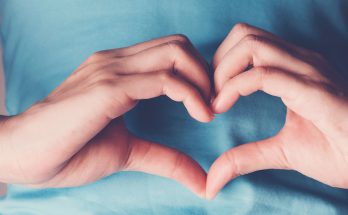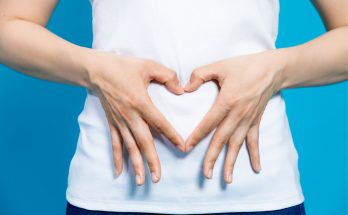The Chinese call it Chi. Many other Asian cultures say Prana. In the West, we call it the Holy Spirit. The Japanese call it Ki.
Ki is the non-physical energy that exists in all things. Rei means universal or omnipresent. Reiki, therefore, is the universal energy that exists everywhere.
Everything is made of energy. The chair you sit in, the screen you are reading this on, and your body are made of matter, which we were taught in school to mean anything that has mass and volume and takes up space. But mass is simply stored energy.
If you were to look at the skin of your hand under a powerful microscope, you would see it turn from solid flesh to a collection of moving cells. The cells are made of molecules, which consist of atoms. Atoms are energy.
Everything in our universe is constantly vibrating energy. Inanimate matter vibrates at a much lower frequency than living things. Light and sound move at very high frequencies. Even your thoughts are energy that moves at such a high frequency we can’t see them, but we can measure their electrical impulses.
A universal connection
Science tells us that there is a finite amount of universal energy, so we are all connected to the same energy source.
Energy healing modalities, including reiki, acupuncture, chakra healing, qi gong, and caring touch are based on the premise that we can share energy between each other and with the universe to promote healing and peace.
How reiki therapy works
In reiki therapy, practitioners use their hands to transmit healing energy to the recipient. In a reiki session, you would lie down on a massage table, couch, or yoga mat, and relax in a meditative state. You are fully clothed and don’t have to do anything but be open to receiving the energetic healing.
The reiki practitioner would start with a brief meditation, asking the universe, God, or holy spirit to use them as a conductor of healing energy.
The reiki practitioner would then place their hands either on your body or just above you, depending upon your comfort level, starting at your head, and moving to different areas that are associated with major organs, systems, and the chakras, or energy centers, that exist throughout your body.
He or she would keep their hands in each position for several minutes, allowing energy to flow to that area. Think of the practitioner as an extension cord, with one end plugged into the universal energy, and the other end plugged into your energy field.
The healing power of positive energy
Western medicine is catching up with what Eastern practitioners have known for thousands of years: the body, given the chance, can often heal itself with positive energy.
Many cardiologists, oncologists, geriatric specialists, psychiatrists, and other professionals are now recommending, and even prescribing, reiki and other forms of energy healing to their patients. Hospice patients often ask for reiki therapy as do veterans or others suffering from PTSD or anxiety. The energy transmitted aids in healing both physical and mental conditions.
The medical journal Evidence-Based Complementary and Alternative Medicine published a review of the book, The Scientific Basis for Integrative Medicine, by Dr. Leonard Wisneski, in which the author wrote, “According to Eastern medical systems, the body contains channels through which flows an invisible but nutritive energy called chi, loosely translated to mean vital energy or life force. Furthermore, there is a purported energy surrounding the body, referred to as subtle energy. Subtle energy both informs and transcends the faculties of the five senses. It is taken into the body via openings, called chakras, and translated into a form of energy that the body can use, literally use, at the cellular level. Just as the pineal is the energy transducer for environmental information, the chakras are the energy transducers for subtle energy. Subtle energy is a healing energy that anyone can learn to perceive and utilize. It is a crucial, but often missing, component in health care.”
The author went on to write, “Unifying the valuable contributions of Western medicine and the knowledge of ancient energy systems, the theory of integral physiology is a harbinger to the hard science that is beginning to emerge. It bridges rigid belief systems of both medical and religious institutions by offering a neutral language and providing a framework by which to discuss the non-physical aspects of healing. Before long, the scientific means to prove the theory and the technology to employ it will be established. Understanding human subtle energy is undoubtedly the next frontier in medical research.”
People have long touted the power of prayer, or having a positive attitude, for healing the body. Reiki operates within the same framework. We all have the capacity to send healing energy through prayer, meditation, or thought. You may have heard of people who have a “healing touch” or religious practices that involve “laying on of hands.” While not always legitimate, these practices have merit when the practitioner has good intentions and maintains a connection to the universal energy through meditation or prayer. Reiki practitioners go through various levels of training to learn how to access this healing energy.
The first level of reiki training usually includes a brief history of reiki and teaches its basic principles. Level one instruction includes the traditional hand placements and an attunement. Attunement is like an initiation. It is a special ceremonial meditation designed to open the student’s chakra centers to allow energy to flow for reiki healing. The level one trainee begins practicing on themselves, but also learns how to use reiki on others, for various situations, and learns special hand placements for pregnant women, infants, children, animals, and to provide comfort to the dying.
The second reiki level focuses on distance healing. Like prayer, reiki can be sent over time and space to people in other parts of the world. Reiki can be used to send energy to world leaders, to send peace to groups of people or institutions, to send strength and comfort to the suffering. Reiki can be used to protect people, such as during travel or medical procedures, and or to help calm someone facing the anxiety of serious exams, a job interview, or other stressful events.
Students who have been practicing reiki for at least six months to a year can go on to complete the third level of training and become reiki masters. Reiki masters can offer attunements to other practitioners and can train students in level one and two. If you decide to try a reiki healing session, look for a certified reiki practitioner. Some states require that a person must have a license in another healing art, such as massage or acupuncture, to charge a fee for reiki healing. Often reiki is coupled with massage, meditation, or breathwork, all of which can help you use the universal energy to promote wellness and healing. Namaste.



